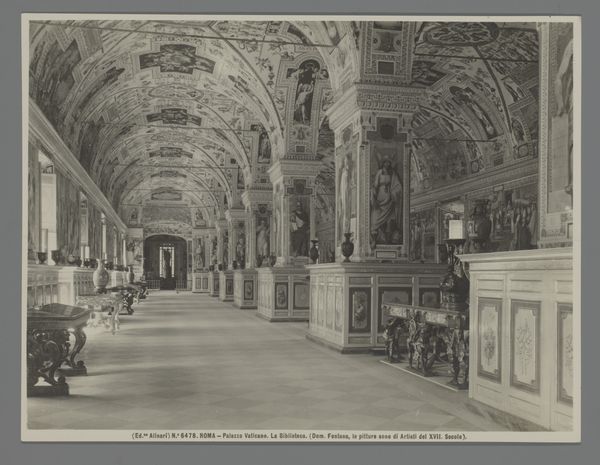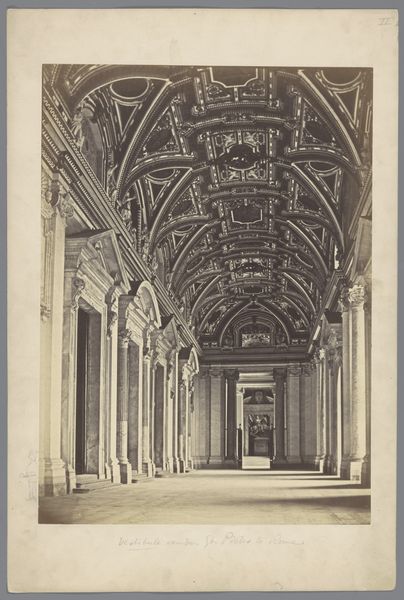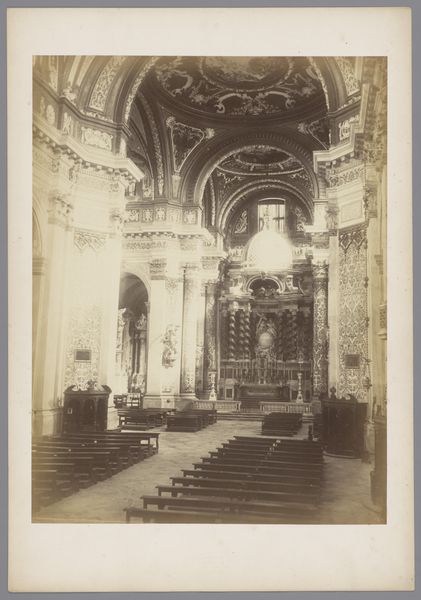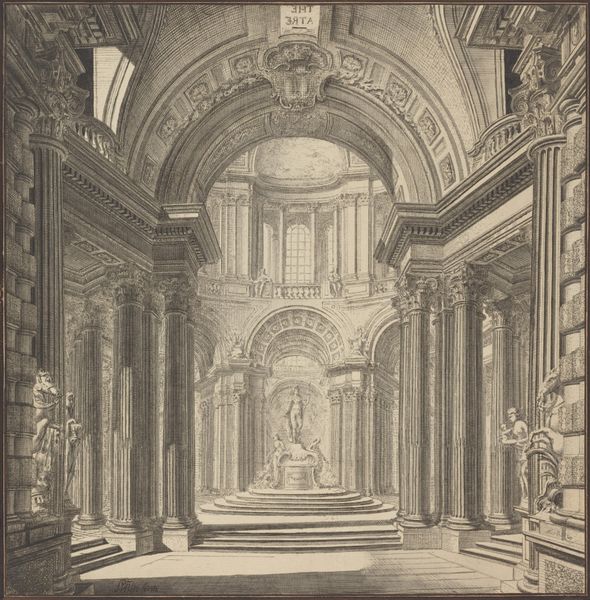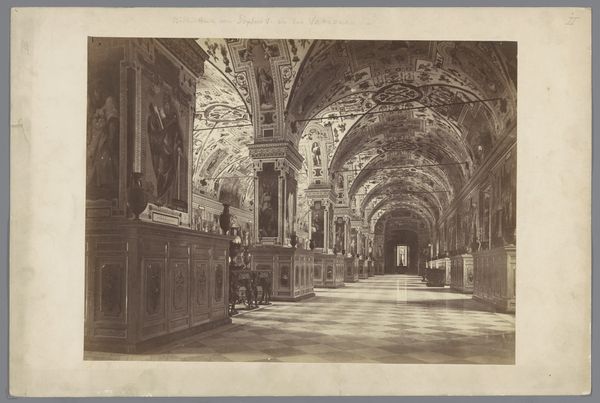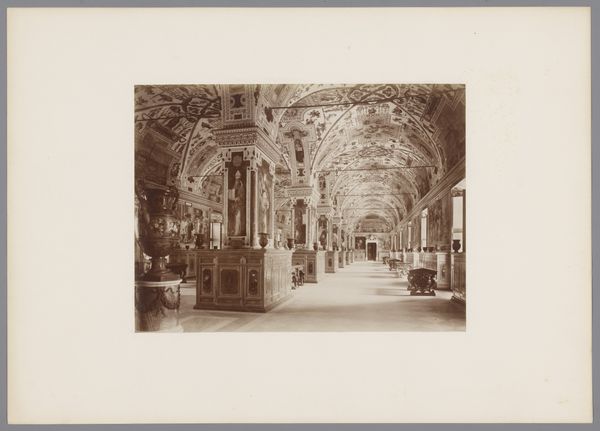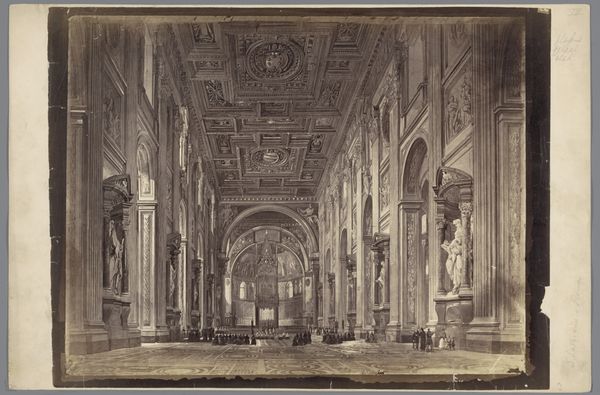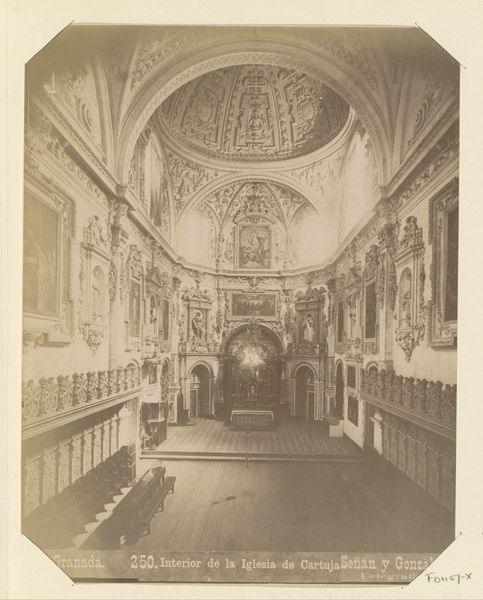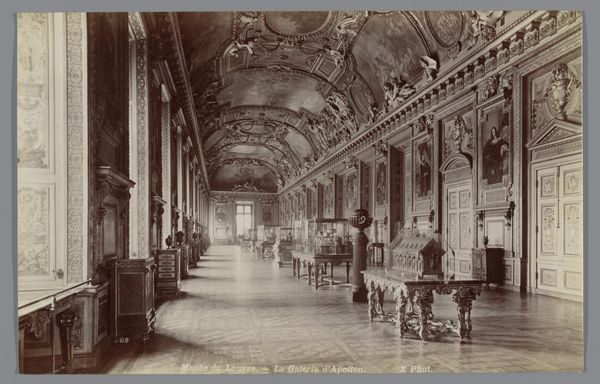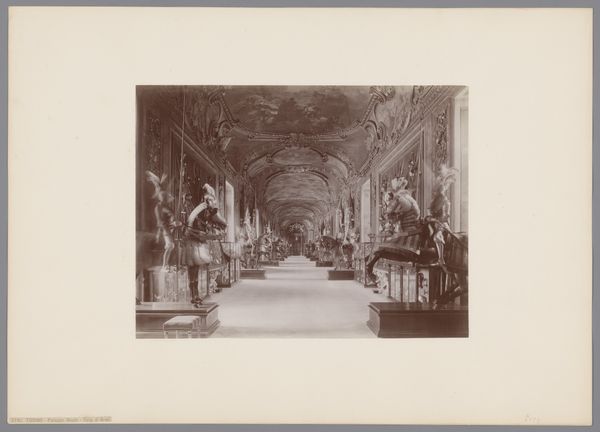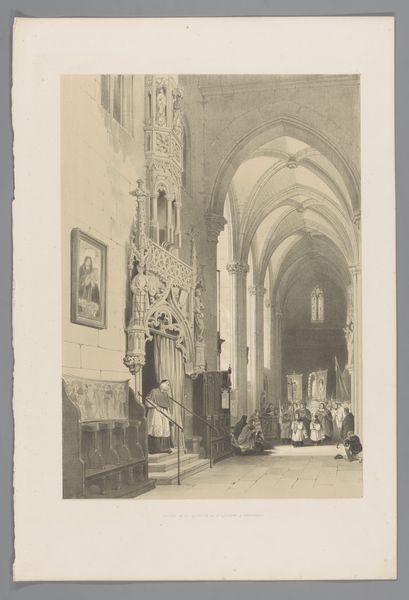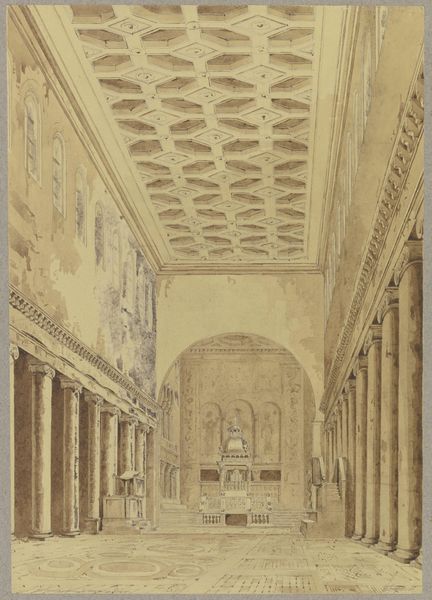
print, photography, architecture
#
historical design
#
byzantine-art
# print
#
sculpture
#
landscape
#
classical-realism
#
photography
#
geometric
#
architecture
#
statue
Dimensions: height 257 mm, width 195 mm
Copyright: Rijks Museum: Open Domain
Curator: Fratelli Alinari’s "Interior of the Vatican Library," likely captured between 1880 and 1920, provides us with an arresting view of a space deeply intertwined with power and knowledge. Editor: The overwhelming effect, though, is one of distance. The meticulous grid of the floor recedes into an almost blurry vanishing point. It feels staged, monumental yet oddly depopulated. Curator: Precisely! It's not just about the visual spectacle. Consider the historical context: the Vatican Library, a repository of texts that have shaped Western thought and faith for centuries. This image invites questions about who has access to knowledge and who gets to define its narrative. Editor: But isn’t it also about the artistic choices in representing such a grand space? Look at the framing, the stark contrast of light and shadow emphasizing the geometric precision of the architecture. Curator: The severe geometry, while aesthetically striking, also reflects a rigid social order. Who occupied this space? Who was excluded? Understanding that the space has been historically limited is also paramount. Editor: True. And there is certainly commentary to be made around gender, power and access. From a purely compositional perspective, this perspective tricks your mind into seeing and not considering that this might also be, just on the surface, decorative. Curator: Decor, as we see it, always functions as a reflection of its era's priorities. This image makes me question the way sacred knowledge and spaces of scholarship have often been male-dominated, creating a biased framework that shaped how the world's information is preserved and distributed. Editor: Perhaps, though the symmetry provides an opportunity for open debate on the image's pure aesthetic design in its employment of space and geometrical devices to show power or something quite simple as grandiosity for a higher calling? Curator: Even grandiosity in its most direct and aesthetically driven presentation is a product of culture. Seeing the way the architecture has traditionally reflected unequal systems should spark a sense of critique. Editor: Maybe it just takes some time to understand or appreciate the pure skill here without assigning a direct historical intention to those skill displays? I'd rather enjoy this design for what it offers—visually! Curator: For me, encountering Alinari's photograph means examining the legacy of inherited biases we still struggle to undo today. Editor: I see now we appreciate different elements, yet it also shows a potential dialogue embedded into this photographic work.
Comments
No comments
Be the first to comment and join the conversation on the ultimate creative platform.
